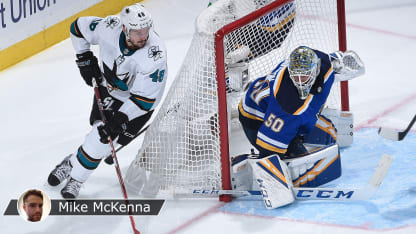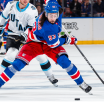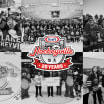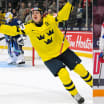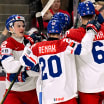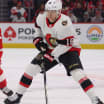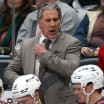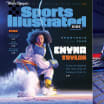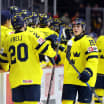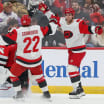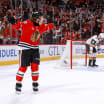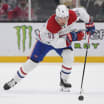The first shot a goalie faces can be nerve-wracking. When it ends up in the net, it's difficult for the goalie not to think about how quickly the game's complexion can change for the worse. What happens if you allow the next one? How about if it really goes sideways and your team is down 3-0 before you know it? At that point, you're probably exiting the game and donning a towel.
These are the type of thoughts that can destroy a goalie.
But Jones bounced back admirably. He made several saves on open shooters, often using his preferred method of shifting into shots and using his chest and arms to deaden pucks. He controlled his rebounds and wasn't afraid to take extra depth and challenge shooters when necessary.
Some people will look at the second goal, by center Tyler Bozak, and fault Jones for swatting the puck with his stick rather than trying to cover the rebound of the shot from the point. However, when goalies start reaching for pucks between legs, feet and sticks, one little bobble can shift the angle of the shot and leave the goalie sprawling on the ice, the red light flashing behind him.
Unfortunately for Jones, his decision to clear the puck from a high-danger area like the slot was foiled by the leg of one of his defensemen, sending the puck into the net.
This type of bad luck didn't exist at the other end. Binnington had another strong performance but benefited from some timely clears and blocks from teammates. The Sharks also hit several posts.
As the hockey world is finding out, Binnington is very good at finding pucks through traffic. He works to see it and doesn't allow himself to become passive very often. Against a team like San Jose, built around puck-shooting machines like defensemen Brent Burns and Erik Karlsson, Binnington's skill set is invaluable.
Could Binnington be playing into the minds of the Sharks at this point? Prior to this series, San Jose had not faced Binnington, who stormed onto the scene in January.
Even with the amount of pre-scouting done, there's no way to truly know how a goalie plays until the puck drops.
Binnington's demeanor exudes confidence. He's patient on his edges and often waits out the shooter in situations where many other goalies would simply drop and block. In an ode to goalies of years gone by, Binnington is willing to make saves with one knee on the ice and one raised. This effective use of the half-butterfly allows him to build and maintain vertical coverage and is the reason why several very dangerous scoring chances have ended up in his glove.
The only flaw in Binnington's night was Hertl's goal, a clean shot from the point that managed to force its way through his equipment.
When you look at goalies today, they sometimes look invincible. Holes don't exist, but the puck is small enough and travels with such velocity that it can occasionally make the space necessary to sneak through. No matter how hard you squeeze, it can find a way.
